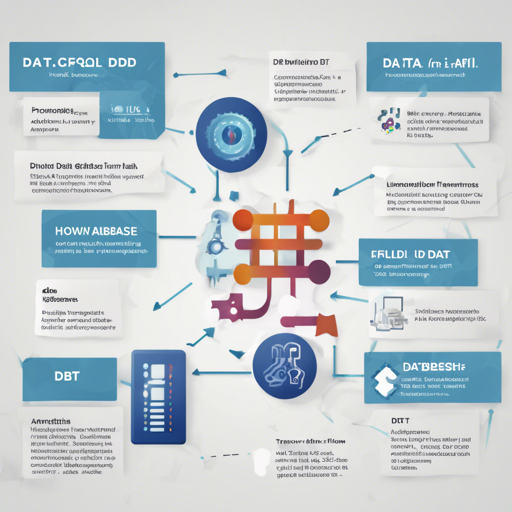Welcome to the world of dbt-fal! It’s like having a magical toolbox that helps you use Python with your dbt projects effortlessly. Although dbt-fal is on the verge of transitioning to a new horizon, let’s explore how to leverage its power while it’s still available.
Getting Started with dbt-fal
Before we dive deeper, let’s understand what dbt-fal brings to your table. The dbt-fal ecosystem is a handy combination of command line interface (CLI) and a Python adapter, all designed to make working with data models feel like a breeze.
What Can You Do with the CLI?
- Send Slack notifications on the success or failure of your dbt models.
- Load data from external sources before running your dbt models.
- Download dbt models into a Python context using familiar syntax, e.g.,
ref(my_dbt_model)with FalDbt. - Access rich metadata programmatically about your dbt project.
Utilizing the Python Adapter
The Python adapter opens up new worlds of possibilities for developers working with databases that may not support native dbt Python functions:
- It allows you to use popular Python libraries like sklearn or prophet to create more complex models, including ML models.
- You can easily manage your Python environments with isolate.
- Develop your Python models locally and scale them out in the cloud effortlessly.
A Quick Analogy to Understand dbt-fal
Imagine you have a beautiful garden (your dbt project) that you’re nurturing (data transformation). Now, dbt-fal is like a skilled gardener’s toolkit—complete with specialized tools and a helpful assistant (the CLI and Python adapter). With these tools, you can:
- Trim and shape your plants (send notifications on model success/failure).
- Water your garden using just the right amount of moisture (load external data seamlessly).
- Plant new seeds in areas that need attention (download models into Python context).
- Gather detailed information about your plants’ health (access project metadata).
Important Announcement: dbt-fal Sunset
As of April 2024, dbt-fal will say goodbye as the team transitions into creating the first-ever generative media platform at fal.ai. This decision means:
- No further development or updates.
- New security vulnerabilities will not be addressed.
- The repository will be archived for educational purposes.
Troubleshooting and FAQs
If you have questions, here’s how you can address them:
- Can I still use dbt-fal? Yes! The project will remain available, but there will be no new updates.
- Are there alternatives to dbt-fal? Unfortunately, none that we are aware of.
- More questions? Engage with the dbt Slack community or contact hello@fal.ai.
For more insights, updates, or to collaborate on AI development projects, stay connected with fxis.ai.
Special Thanks
We’d like to express our heartfelt gratitude for everyone who has contributed to dbt-fal. Your support has been invaluable!
At fxis.ai, we believe that such advancements are crucial for the future of AI, as they enable more comprehensive and effective solutions. Our team is continually exploring new methodologies to push the envelope in artificial intelligence, ensuring that our clients benefit from the latest technological innovations.

